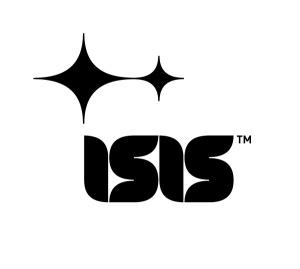Washington at Yorktown. Grant at Vicksburg. Abbott at San Francisco?
Michael Abbott is the new CEO of the joint venture announced yesterday by AT&T Mobility, T-Mobile USA and Verizon Wireless. The name of the venture is ISISTM and their primary charter is building a national mobile commerce network that aims to “fundamentally transform how people shop, pay and save,” according to a press release from the company.
To do that, Abbott will need to create an environment for San Francisco-based Visa (and the other payment giants) that will eventually present them with the same ultimatum which Washington and Grant gave to their opponents: Starve or surrender.

VISA IS A COMMUNICATIONS COMPANY, TOO
The obvious route for Abbott to take would involve an all-out attack on core business model of MasterCard, Visa, and the other major players in the payments industry. That would certainly be an expensive battle; entertaining, but inefficient. Hundreds of millions of dollars would need to be spent trying to get the ISIS brand to be as recognized and ubiquitous as Visa. Plus, ISIS would also need to spend a considerable sum building the network infrastructure that would replace all of the functions that Visa handles today.
Visa is not a bank, neither is MasterCard. They are not institutions that handle money like a bank. Instead, their real business is communications, accounting, and trust. For example, when a customer at a retail store presents a Visa credit card for payment by swiping the card and the retailers’ point–of–sale (POS) system quickly figures out if it can trust that Visa card because of the information in the magnetic stripe. Then the retailer system asks its bank (a.k.a. the ‘acquirer’) to confirm that the card is valid and the funds are available. To do that Visa makes a request of the bank that issued the card, and then Visa ensures the response will get back to the acquirer and ultimately the retailer. At the end of the day, they send a complex set of instruction to all of the banks in its network to either pay, or expect to be paid, which ultimately gets the money from your account to the account of the retailer.
Sound familiar? Virtually all of those functions involve communications and accounting: identification of the parties, routing information between the parties, and reconciling the cost of doing all that at the end of the day. Put another way, if the cell phone in your pocket uses Verizon’s network, and you want to call a friend on her AT&T cell phone, those two companies essentially need to do the same general functions to complete your phone call that a Visa does to complete your purchase at a retailer.
Does that make Visa an easy target for the mobile carriers? Not exactly.
It may seem like ISIS will use the communication competency of its founders, and build a system that works the same way as the Visa and MasterCard systems. But that would assume that the general architecture of Visa and MasterCard, which was essentially designed in the 1960s, is the best way for a retailer to get paid by a consumer. Maybe not.
“OTHER PEOPLES PAYMENT SYSTEMS”
To succeed, ISIS does not need to build a better payment system, which is why ISIS will probably not confront Visa and MasterCard directly. All ISIS needs to do is enable other payment systems, and there are many. Do not be surprised if ISIS supports Visa and MasterCard to speed adoption. On an even playing field over time, other payments solutions could manage money without the high rates charged to retailers by the payment system today.
Here is how ISIS could do that:
The GSM Association (GSMA) and European Payments Council (EPC) have been advocating an interesting process that would involve a new player in the payment scheme: the “trusted service manager” which would create the same certificate and encryption-based protocols used commonly in secure networks, and apply those standards to a new device: your smartphone.
If the smartphone is enabled with a Smart SIM card (a.k.a. the Universal Integrated Circuit Card, (UICC) and a near-field communications (NFC) chip, the smartphone could securely transfer significant information to and from a retail POS machine. The ISIS servers could handle the remaining security protocols.
“The combination of near field communications (NFC) and Smart SIM Card technologies is potent,” said Phillip Andreae, a leading industry consultant and a contributor to the Luciano Group’s analysis. “ISIS could be the enabler that allows a Smartphone to be a trusted device of a network; any network. Payments networks, loyalty networks, automated clearing house (ACH) networks, and maybe even your local Department of Transportation one day.” – The Luciano Group Press Release
Think of an ATM machine. The network operations center that manages the ATM in your town may be halfway across the country, but the degree of trust between the ATM and the ops center is so high, that the remote ATM can operate as if it is inside the network itself. That allows the ATM to do many more things (like decide who gets cash and how much) then other devices with lower levels of trust, such as the laptop computer or the Internet browser you may be using right now. Both the ATM and your laptop connect to the same network at your bank, but the difference is the network that connects them and the encryption that secures them.
Network and security. That is how ISIS is (probably) going to build a different kind of payment system.
A less likely (but conceivable) scenario is this: the ISIS system could take over every communication function needed to complete a card transaction at a retailer. In the current market, the retailer “pulls” money our of your payment account through the payment system. The ISIS-enabled smartphone could “push” money to the retailer through a variety of payment accounts (including Visa, PayPal, and others). This could reverse the direction of the information flow for retail transactions, and put ISIS, and its Mobile Network Operator founders, right in the middle of the communication stream for up to 56 billion retail transactions in the United States, and up to 130 billion card transactions per year worldwide. But, this element would could take years to reach the fore of the ISIS strategy.
IS A MORE EFFICIENT PAYMENT SYSTEM POSSIBLE?
Yes. Ask the dozens of startups that are populating Silicon Valley and other parts of the world. Although PayPal, Obopay, Zoompass and Open Revolution probably have the most to gain from being able to extend their networks to the smartphone, a host of other startups could develop their products into alternate ways to push money from a consumer account to a retailer.
Remember the simple wire transfer? Could a consumer trigger a wire transfer from their bank to the retailer using a smartphone? Would they want to? Maybe, if the network would permit it and the effort was no different to the consumer than using a credit card. Without enabling the smartphone as a trusted device, none of this is possible. Once the phone is enabled however, the sky is the limit.
“Our mobile commerce network, through relationships with merchants, will provide an enhanced, more convenient, more personalized shopping experience for consumers,” said Michael Abbott, Chief Executive Officer of Isis. “While mobile payments will be at the core of our offering, it is only the start. We plan to create a mobile wallet that ultimately eliminates the need for consumers to carry cash, credit and debit cards, reward cards, coupons, tickets and transit passes.” –ISIS press release
WHICH SYSTEM WILL ISIS PICK?
As the network that enables the smart phone to be trusted by other networks, ISIS becomes the facilitator of other networks not the processor. In other words, ISIS would be more than happy to complete a Visa transaction through its system if that is what the customer wants to do, and in all probability, these will be the majority of the transactions in the early growth stages of the company. But as ISIS adds other payment solutions outside of the Visa or MasterCard networks, the consumers may find themselves with attractive choices, and merchants may find themselves with a less expensive way to get paid. That’s important because if a retailer can save money (or, actually, keep more of the money that it is due) depending on which payment system they choose, the retailer is probably going to give the customer some incentives direct to your smartphone at the moment before the consumer makes their choice.
So, while Visa and MasterCard enjoy a position today with only a few competitors in the traditional payment schemes, they could find themselves with not only new competitors, but more efficient methods to transfer money from a consumer to a retailer.
Over time, as retailers encourage consumers to use other payment methods, and consumers actually do that, Visa and MasterCard face a choice as simple as the choice that Cornwallis faced at Yorktown or Pemberton faced at Vicksburg: Starve or surrender.
Phillip Andreae, a leading industry consultant, contributed to this article.
© 2010 David Schropfer
Read copyright notice



With certain smartphone apps consumers will be able to securely initiate transactions OTA with a trusted service manager (TSM) and will not need to present their personal or credit card information at the merchant’s POS (hard site or online). In fact, that information does not need to reside on the consumer’s smartphone, either – it can be exclusively held on the TSM’s servers.
This method presents potentially huge cost savings, but the question is, who will be the TSM? ISIS, Visa, First Data or ??
Thank you for your comment. I agree that it is the TSM that should hold the secure data (credit card numbers, etc) on its servers, which means that the TSA would need to be a part of every transaction. As you said, the potential cost savings is huge, and only a lower cost structure will present an opportunity to offer a lower interchange rate to merchants.
I think the mobile network operators (MNO’s) wanted to be the TSA’s but they could not do it without collaborating on a joint project (ISIS) to ensure that whatever the model, all carriers (except Sprint, apparently) would be one standard instead of a different standard for each MNO (which the merchants would never accept due to complexity).
Here is the rub – if ISIS as the TSA becomes essentially the fifth party in a four-party system (merchant, acquirer, consumer, issuer) how does that have the potential to lower interchange on Visa/MC purchases?